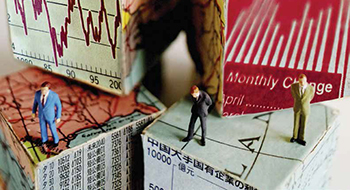

There are many ways to measure the success of a defined benefit pension plan. Consider the Healthcare of Ontario Pension Plan, where I work.
HOOPP is one of the top 10 pension funds in Canada, according to a recent Boston Consulting Group study, and these funds now collectively manage more than $1 trillion in pension assets. Those assets have tripled since 2003.
Read: Canada’s top pension funds boost their value, but ignore a big risk
HOOPP’s net assets are at an all-time high of $60.8 billion, as of the end of 2014.
The rate of return is another common financial measurement. HOOPP has an average rate of return of close to 10% over the 10-year period that ended Dec. 31, 2014. So that’s an impressive number as well.
But by far the most important number is HOOPP’s funded status. As of the end of 2014, HOOPP was 115% funded – fully funded.
Being fully funded means that there are enough assets to cover ALL pension benefits owed to current and future retirees. That translates into peace of mind, and retirement security.
Read: Trends in workplace pension plans
2015 was a challenging year for HOOPP and many other institutional investors. But when our results are announced in March, we expect to still be fully funded. Even in a year when some markets were negative, our pensioners won’t receive a nickel less than their full entitlement.
For HOOPP, funding and investment go hand in hand and the focus is on a long-term time horizon. HOOPP’s funding has been stable for decades. That has allowed the contributions made by members and their employers to stay the same from the beginning of 2004 until at least the end of 2017.
For more than a decade HOOPP’s investment target has been remaining fully funded. To achieve that, HOOPP has adopted liability-driven investing (LDI).
Read: 6 aspects of an LDI strategy to consider
Our LDI approach means that we manage our exposure to risk very carefully. Most of our investments are in fixed-income instruments such as government bonds. We also have a multi-billion-dollar real estate portfolio. Both offer security and regular income, which is what a pension fund needs. Any exposure to riskier asset classes, such as Canadian or international equities, is done very carefully, via derivatives.
So the focus on funding has meant prudent investments with a long-term horizon. Long-term investing isn’t what every investor is looking for, but it is top of mind for pension funds.
Indeed, earlier this year, the Canada Pension Plan Investment Board and several other institutional investors announced the creation of the S&P Long-Term Value Creation (LTVC) Global Index, which aligns more with the results pension fund investors want to achieve.
Read: Management vs. shareholders and long-term value creation
In 2014, HOOPP paid out approximately $1.7 billion in pension payments. Some 80 cents of every dollar was provided by investment returns, and the rest was from member and employer contributions. That’s the power of long-term investing, and the beauty of defined benefit.
With DB, the retirement payout – what you’ll get when you retire – is the starting point when you join the plan. Contributions are based on what is needed today to provide that future benefit. You’ll know well in advance what your pension will be – it will be a percentage of your earnings multiplied by your years of pension plan membership.
Investments are also based on that same model. When it works – as it has for HOOPP for more than 50 years – the payout is a secure retirement. With more than 295,000 Ontario healthcare workers, both retired and working, relying on us, it’s a formula that has worked well.
The starting point and ending point is funding, and that’s what HOOPP is all about.
Read: HOOPP assets jump 17.7%
Joe Vesci is senior manager, public affairs at the Healthcare of Ontario Pension Plan (HOOPP).
